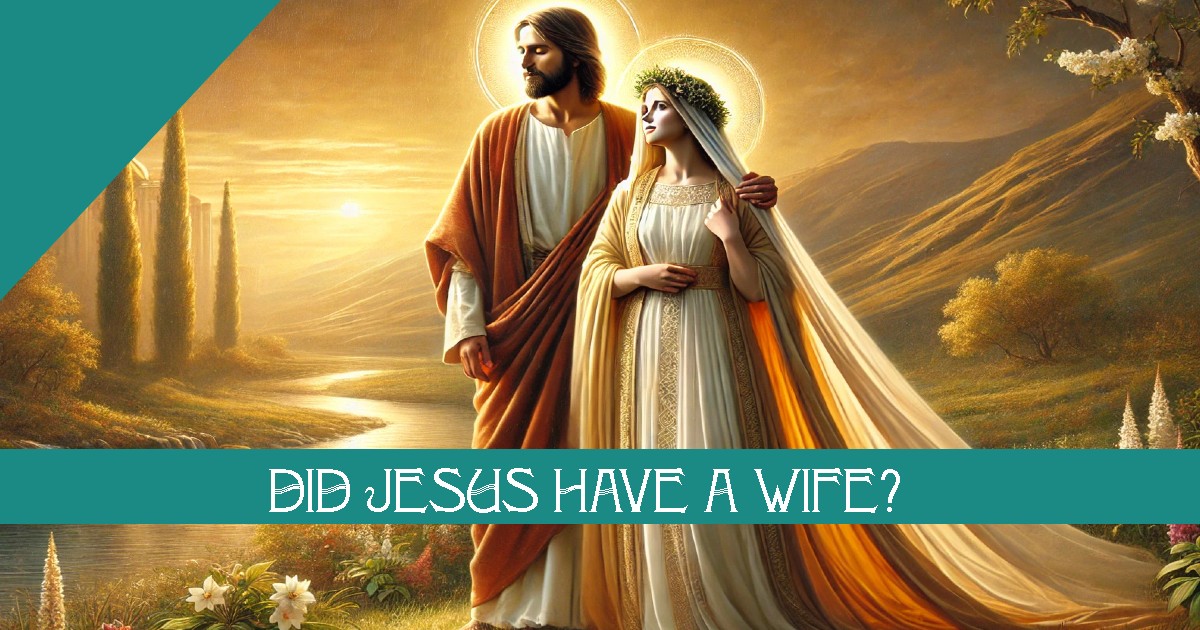Prepare to have your assumptions challenged. The question of whether Jesus was married isn’t just the stuff of modern conspiracy theories—it’s rooted in ancient texts, particularly those outside the traditional Biblical canon.
The Gospel of Philip (circa 3rd century):
This Gnostic text is often at the center of the “Jesus was married” debate. It states:
“And the companion of the Savior is Mary Magdalene. But Christ loved her more than all the disciples and used to kiss her often on her mouth.”
The term companion (Greek: koinōnos) could imply a spouse or simply a close confidante. The kiss, common in early Christian greetings, might symbolize spiritual connection rather than romance. The author’s motivation seems to elevate Mary Magdalene’s status, positioning her as a key figure in Gnostic theology, challenging male-dominated apostolic authority.
The Gospel of Mary (circa 2nd century):
In this dialogue, Mary Magdalene shares hidden teachings from Jesus, sparking jealousy among male disciples:
“Peter said to Mary, ‘Sister, we know that the Savior loved you more than the rest of women.'”
Though not explicitly romantic, the special relationship challenges traditional patriarchal structures, presenting Mary as a leader with privileged access to divine wisdom.
The Acts of Philip (circa 4th century):
This text portrays Mary Magdalene as Philip’s companion in ministry, with Jesus and Mary working closely together. While not stating they were married, the partnership reflects early Christian movements where women held significant roles, possibly hinting at more egalitarian roots.
The Gospel of Jesus’ Wife (revealed in 2012):
This fragment famously includes:
“Jesus said to them, ‘My wife…’”
However, scholarly consensus has exposed this as a modern forgery, likely motivated by sensationalism and the quest for academic notoriety.
The Gnostic Gospels, such as those found in the Nag Hammadi library, were written between the 2nd and 4th centuries CE, roughly contemporaneous with or slightly later than the canonical gospels, which are generally dated between 65 and 100 CE. While the canonical gospels reflect the theological consolidation of early Christian communities, the Gnostic texts offer alternative perspectives that emphasize esoteric knowledge, personal spiritual awakening, and a more mystical interpretation of Jesus’ teachings. Their proximity in time to the canonical texts provides valuable insight into the diversity of early Christian thought, illustrating how competing narratives and theological frameworks coexisted before orthodoxy was formally established. By comparing these texts, scholars can trace the evolution of Christian mythology, observing how ideas about divinity, salvation, and the nature of Jesus were shaped, contested, and ultimately codified within the broader tapestry of early Christian belief systems.
The non-canonical texts often served theological purposes, challenging orthodox views and advocating for the roles of women in spiritual leadership. They reflect diverse early Christian beliefs rather than historical biographies.
Sources:
- The Gospel of Philip (circa 3rd century)
- The Gospel of Mary (circa 2nd century)
- The Acts of Philip (circa 4th century)
- The Gospel of Jesus’ Wife (modern forgery)

